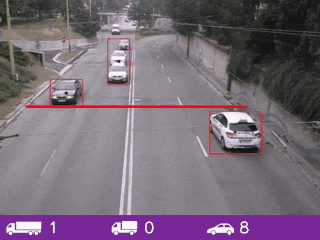
What is Computer Vision?
Computer vision is a field of artificial intelligence that focuses on enabling machines to interpret and understand visual information from the world around them. It involves developing algorithms and techniques that enable computers to analyze, process, and interpret digital images and video in a way that is similar to how humans perceive and understand the visual world.
Through computer vision, machines can recognize objects, faces, and other patterns in images and videos, track their movements, and even understand their context and meaning. This technology has numerous practical applications, including self-driving cars, robotics, medical imaging, security and surveillance, and many more.
With the increasing availability of digital cameras, sensors, and other imaging devices, the field of computer vision is rapidly expanding and advancing. Researchers and engineers are constantly developing new techniques and algorithms to improve the accuracy, speed, and capabilities of computer vision systems, enabling them to perform increasingly complex tasks.
Computer Vision Research @ ACPS Research Group
Computer vision is a field of artificial intelligence that focuses on enabling machines to interpret and understand visual information from the world around them. Here are some emerging research areas in computer vision ACPS research group focuses on:
- 3D Computer Vision: 3D computer vision is an emerging research area that aims to enable machines to perceive and understand the 3D structure of objects and scenes in the real world. ACPS research group focuses on developing new algorithms and techniques that can handle large-scale and complex 3D data, such as point clouds and meshes, and enable applications such as augmented reality, autonomous driving, and robotics.
- Deep Learning for Vision: Deep learning has revolutionized computer vision in recent years by enabling machines to learn complex visual representations from large-scale data. ACPS research group focuses on developing new deep learning architectures and techniques that can handle more complex and diverse data types, such as video, audio, and text, and enable applications such as self-driving cars, image and video generation, and natural language processing.
- Vision and Language: Vision and language is an emerging research area that aims to enable machines to understand and generate natural language descriptions of visual scenes and objects. ACPS research group focuses on developing new techniques and models that can integrate vision and language processing, and enable applications such as image captioning, visual question answering, and visual storytelling.
- Adversarial Attacks and Defenses: Adversarial attacks and defenses are emerging research areas in computer vision that aim to understand and mitigate the vulnerability of deep learning models to malicious attacks. ACPS research group focuses on developing new attack methods and defense mechanisms that can improve the robustness and security of deep learning models, and enable applications such as biometric authentication, surveillance, and defense.
- Privacy-preserving Computer Vision: Privacy-preserving computer vision is an emerging research area that aims to enable machines to analyze and process visual data without compromising the privacy and security of individuals. ACPS research group focuses on developing new techniques and tools that can perform computer vision tasks, such as object detection and tracking, while preserving the anonymity and privacy of individuals in the data.